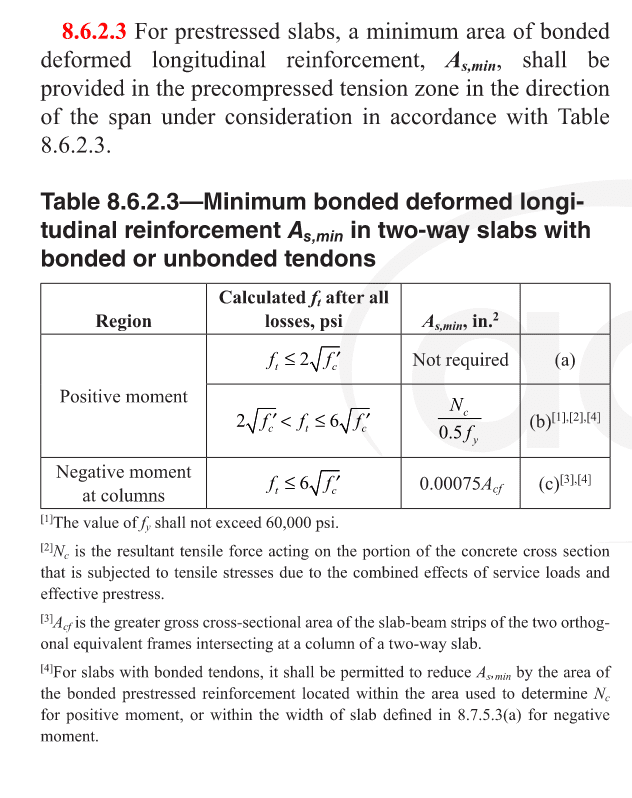RFreund
Structural
- Aug 14, 2010
- 1,885
Two questions regarding post tensioned podium slabs:
1) Do you use a bottom mat of reinforcement. It seems that they are fairly common, help distribute loading, and help minimize/distribute restraint cracks. However, if "challenged" do you think they are 'necessary'.
2) You have most of your slab balanced for something around 100% of the slab self weight, but you have a few pesky spans that are longer or more heavily loaded. These will require a large amount of precompression and drape which will end up well exceeding 100% of the slab self weight... Is there anything additional or different you will do to avoid any issues during stressing. For example - You likely need bottom bars over the column (or top bars mid span) to avoid exceeding stress limits at transfer. Anything additional along these lines? Maybe more column dowels?
Thanks!
1) Do you use a bottom mat of reinforcement. It seems that they are fairly common, help distribute loading, and help minimize/distribute restraint cracks. However, if "challenged" do you think they are 'necessary'.
2) You have most of your slab balanced for something around 100% of the slab self weight, but you have a few pesky spans that are longer or more heavily loaded. These will require a large amount of precompression and drape which will end up well exceeding 100% of the slab self weight... Is there anything additional or different you will do to avoid any issues during stressing. For example - You likely need bottom bars over the column (or top bars mid span) to avoid exceeding stress limits at transfer. Anything additional along these lines? Maybe more column dowels?
Thanks!


![[tongue] [tongue] [tongue]](/data/assets/smilies/tongue.gif)